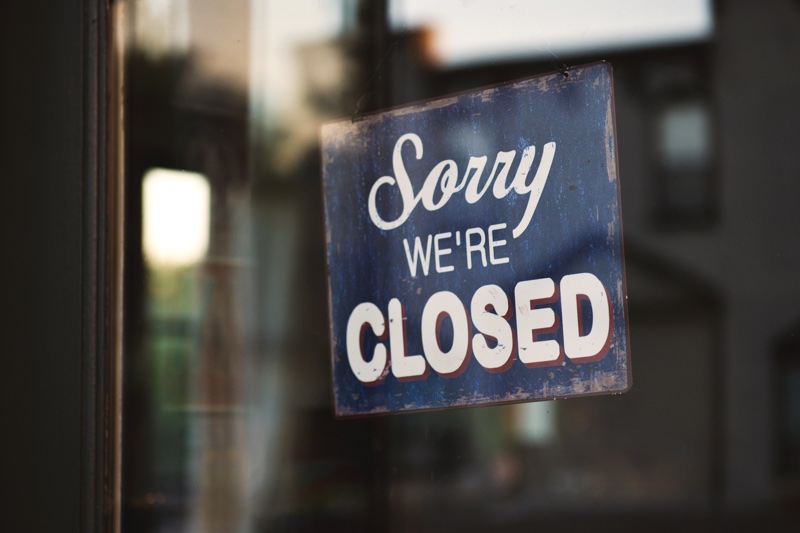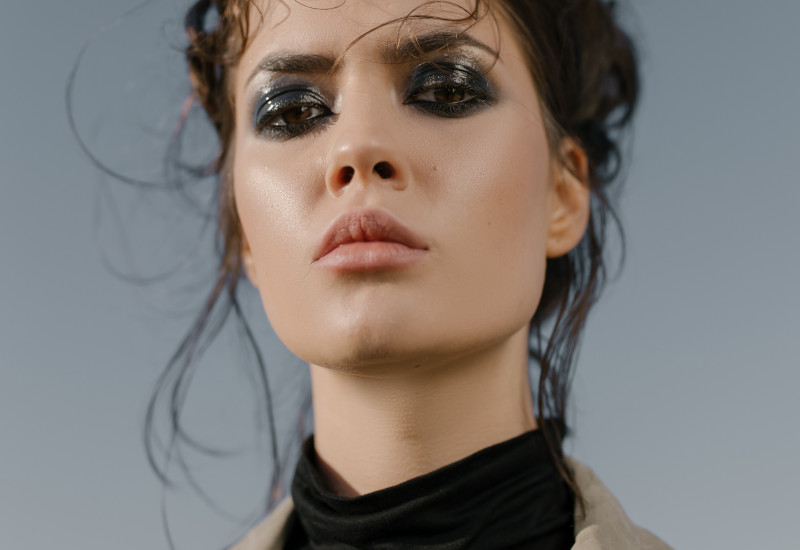On 31 January 2020, the UK reported its first-ever cases of Covid-19, a newly discovered coronavirus that originated, supposedly, in the Chinese city of Wuhan. Found to cause acute respiratory syndrome in humans, the two women were treated for their symptoms at a hospital in Newcastle.
Since their diagnosis, NHS staff across the UK have treated more than 320,000 patients and 106,000 families have said goodbye to a loved one after contracting the deadly disease.
Speculations over the virus’ origin have been wild. One conspiracy points at humans to be the creator of the disease, who inflicted it as a bioweapon on the world. The jury is still out on whether this was a deliberate attack on humanity or indeed a genuine misadventure.
Another Chinese narrative blames the American’s for bringing Covid-19 to the country when visiting the Wuhan area in October 2019 for the Military World Games.
Meanwhile, former Irish journalist Gemma O’Doherty denounces the virus’ existence altogether, claiming she has proof that the disease is a fictitious lie.
Most literature points to the SARS-CoV-2 variant being transmitted ‘naturally’ from bats to humans at a food market in Wuhan, the capital of China’s central Hubei province.
Bats, US invaders, figments of the imagination or not, whatever the source, it has brought the globe to its proverbial knees, and beauty has not come away unscathed by the infliction of this illness.
Most significant for the beauty sector was the forced closure of its retail destinations. In March, department store chains and beauty shops dropped one by one to protect their staff and customers from the invisible enemy.
Not even Hitler’s Lufthansa was able to stop the running of John Lewis’ stores in the 1940s, but Covid-19 compelled the world-renowned retailer to turn away customers for the first time in its 155-year history.
And with this rapid shutdown of beauty destinations, brands had no choice but to invest in their digital presence as it became their primary source of income.
L’Occitane’s UK and Ireland Managing Director, Alia Hawa, told Cosmetics Business that the lockdown required its business to become more agile and creative with its online presence.
“I would say the past 11 months have been the hardest we have ever experienced,” she said.
“We have had to significantly improve the customer experience on the L’Occitane website, be more creative with our digital content, personalise the website for customers and adjust our business in terms of demand and warehousing capacities to align with this impressive digital shift.
“The pandemic has forced us to be more flexible, agile and closer to our customers. I also believe the team is stronger than ever, we have been through and got through this ‘together’ as one team.”
On top of new digital capabilities, Instagram Lives and online consultations became the norm for beauty shoppers, as they were refused entry to bricks-and-mortar outlets.
According to the British Retail Consortium, the impact of these closures was responsible for the 40% downturn in UK footfall year-on-year.
Highstreets were the most affected with a nosedive of 50% year-on-year despite the fluctuations of lockdowns and restrictions up and down the country.
Meanwhile, retail parks and shopping centres also suffered worrying declines.
A retail nightmare
At the end of 2020, the British high street almost said goodbye to not one, not two, but nine high street names, due to the pandemic.
Following the collapse of Arcadia and its eight brands – including the jewel of the high street Topshop – Debenhams was unable to secure a lifeline deal with JD Sports to save its business.

Since then, Arcadia’s group has been snapped up by three buyers: Asos, Boohoo and City Chic Collective. Meanwhile, Debenhams has fallen into the arms of the new owner of Arcadia’s Dorothy Perkins, Wallis and Burton brands, Boohoo.
With Boohoo set to shave off bricks-and-mortar from the operations of its new protégés, the high street could also see the loss of many in-store concessions for beauty brands.
In its prime, Debenhams was the selected destination for Kat Von D Beauty’s, now KVD Vegan Beauty, UK launch in 2016, becoming the first shopping venue to stock the 120-sku line from the famous tattoo artist.
The chain had high hopes to revive its beauty business in a move that would see Debenhams become the retail leader in beauty in 2017 and 2018.
But the closure of these destinations has contributed to a much more ominous future for retail. In 2020, 158,000 jobs in UK retail workers were made redundant, excluding Arcadia, which could see some 13,000 job losses, according to the Centre of Retail Research.
Harrods, John Lewis, Boots and Selfridges are just a handful of the other retailers to have reduced their headcount in order to survive the pandemic.
This in turn has caused a ‘mental health storm’ among workers as anxiety mounts during the course of the outbreak.
Consumer buying habits
At the same time, customers being cooped up in their homes has put pressure on the already failing colour cosmetics category.
According to Mintel, there was a 5% decline in sales of colour cosmetics, a fall of £1.2bn between 2019 and 2020. Lipsticks have been among the less coveted products during the pandemic as face masks become a staple part of consumers’ outdoor wardrobe.
Pre-lockdown, the lip segment held 14% of the prestige market share, which dipped to 12% during the summer.
In contrast, eye make-up has increased its share of the prestige make-up market by 3% to 25%, reported NPD Group.
“The popularity of eye make-up can be attributed to increased experimentation at home and wearing make-up whilst socialising with family and friends virtually or during conference calls with colleagues,” said Emma Fishwick, Account Manager, NPD UK Beauty.
Increased attention in the eye care category has even sparked a flurry of activity in the ingredients sector, with brands seeking to offer new formulations for sleepless nights and long days staring at screens as social distancing and stay at home orders remain in place.
As pleasure-seeking consumers yearned for comfort in the days of lockdown, skin care skus have benefited from a boost in sales. British women in particular splashed out on face wash as usage rose from 50% to 55% in 2020.
“The face mask segment has benefited, with the lockdown giving people more time to themselves,” said Mintel’s Roshida Khanom, Head of Beauty and Personal Care.

“Sheet masks have also seen NPD in biodegradable formats, targeting sustainability concerns.”
Purchases of day creams and lotions also shot up 7% in 2020, similarly with night creams which saw an increase in 3% over the same period.
“In this Covid age, consumers are seeking physical and mental wellness, and facial skin care has benefited from the wellbeing benefits of following a beauty routine,” added Khanom.
Aside from skin care, the hand care category was injected with some much needed innovation. In particular, the hand sanitiser space was catapulted to new heights.
According to bathroom brand Baylis & Harding, two thirds of parents say using hand sanitiser is now normalised among their children, with 40% of respondents that have children between the ages of ten and 12 agreeing their children carry hand gel with them everywhere they go.
Moreover, the category’s compound annual growth rate (CAGR) is set to catapult almost 25% by 2027, as health-conscious consumers’ demand for the convenient colourless liquid grows exponentially.
Pai, Coty, Estée Lauder and ESPA are just a handful of the beauty brands to have launched in the budding space.
Hygiene has a heyday
A survey by Cosmetics Business found more than 90% of consumers were likely to shop for more hygienic beauty and personal care products in 2021 as the pandemic gives rise to a new germaphobic consumer, and with this rise in demand, innovation has taken off across beauty.
British packaging group James Cropper has seen increased demand for its antimicrobial papers from its customers over the course of 2020, which has encouraged the firm to branch into new sectors.
“Most hygienic packaging solutions we have noticed have been within the food sector, however, the recent pandemic has shifted interest across all packaging touchpoints with brands looking at ways to protect consumers, increase confidence and propel business forward,” says the company’s Marketing and Technical Director, Richard Bracewell.
And it’s not just packaging that beauty consumers want to be squeaky clean. A study by First Insight found almost 80% of women polled said they would not feel comfortable using cosmetics testers in-store, while more than 60% of men shared the same view.
The findings also gave insight into consumer attitudes towards sales associates, who often work with beauty brands on retail counters in-store. Most said they would not feel safe interacting with assistants.
In response, retail technologies have been developed to confront the new-found hygiene fears of beauty shoppers. Perfect Corp launched its touchless try-on feature complete with gesture-control, voice activation and face mask detection, while beauty owner Puig's digital fragrance tool AILICE allows customers to find their perfect scent without picking up bottles. To introduce the tool, Puig worked with its luxury fragrance brand Penhaligon’s to create its Magic Monocle.
Greg Petro, CEO of First Insight, said: “The coronavirus has moved the industry away from high-touch to low-touch.

“The ‘new normal’ for retailers will be to work with shoppers in a hands-free way to help them to find what they need while also giving them the space to feel comfortable, particularly with high-risk groups like baby boomers.”
In short, the traditional warm embrace of the beauty sector and its sense of escapism has been turned on its head. Brands, retailers and innovators are having to adapt to the new needs of consumers as Covid-19 continues to influence the way they interact with beauty – and not making their task any easier is that demands are still shifting as the pandemic puts down more roadblocks on the route to recovery.
The rise of ‘maskne’, the catch-all term that refers to skin issues caused by wearing face masks, has brought about a boom in products to treat redness, spots and calm the skin; while on the back of the digital evolution, social media sites are becoming consumers’ go-to vehicle for discovering beauty.
A Cosmetics Business survey found more than 60% of locked up consumers have bought beauty products through social media and 63% admitted they would be more likely to visit a brand’s social media platform before its online store.
Consumers are also set to prioritise their self-care in 2021, another category propelled to record highs over the past year. Science-backed self-care is just one example of a new trend that is predicted to come to the fore. “At the moment self-care is quite fluffy and I would expect it to become more prescribed,” Fiona Glen, Head of Projects at The Red Tree told Cosmetics Business.
“Already we have seen the rise of tracking devices for sleep monitoring, but there will be more apps that scientifically measure the impact of other forms of self-care.”
Beauty’s fast-paced environment is what makes it the dynamic sector it is today, and as the world negotiates through the pandemic for what could be the next three years, the future promise to be a milestone, not just beauty’s comeback, but its renewal.


